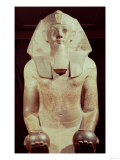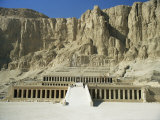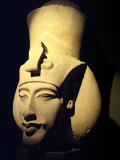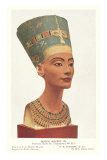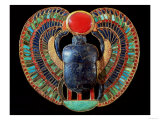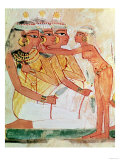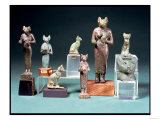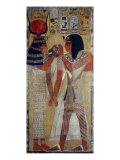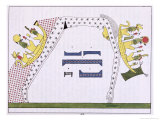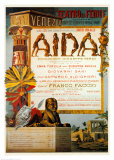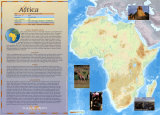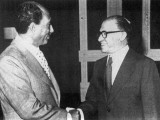|
|
|
|
|
|
|
|
|
|
|
|
BOOKS ABOUT EGYPT & EGYPTIAN CULTUE
|
|
|
|
|
|
|
|
|
|
|
|
|
|
|
|
|
|
|
|
|
|
|
|
|
|
|
|
 |
|
|
|
|
|
|
Queen Hatshepsut
b. c 1508 BC
d. c. 1458 BC
Queen Hatshepsut, the fifth pharaoh of the Eighteenth dynasty of Ancient Egypt, generally regarded as one of the most successful female pharaohs of Egypt, reigning longer than any other female ruler of an indigenous dynasty.
Hatshepsut dressed as a man and wore the traditional false beard of pharaohs to indicate that she was pharaoh and ruled Egypt in her own right. In June 2007 a mummy was identified as that of Hatshepsut through DNA.
Her Mortuary Temple complex, designed by Senemut, is considered to be among the great buildings of the ancient world.
• Hatshepsut: From Queen to Pharaoh (Metropolitan Museum of Art Series)
|
|
|
|
|
|
|
Akhenaten, also known as Amenhotep IV (1305-1213 BC), abolished the multiple gods for the One god, Aten, ‘the life-giving force of light’. After his death the priests restored the former gods and destroyed the buildings and monuments erected by Amenhotep IV, hoping to annihilate any memory of him.
Queen Nefertiti was the “Great Royal Wife” of Amenhotep IV, she was also the mother-in-law, and probable stepmother, of the Pharaoh Tutankhamun. After her husband's death it is possible Nefertiti may have ruled in her own right for a short time before Tutankhamun assumed the throne.
One of the most famous Egyptian artifacts is the bust of Nefertiti found in the workshop of the sculptor Thutmose.
• women rulers
|
|
|
|
|
|
|
|
|
|
Ramses II or Ramesses II (1305-1213 BC), also known as Ramses the Great, was Egypt's best known and most powerful pharaoh. He ruled 1279-1213 BC and scholars believe he was the Pharoah of the Biblical Exodus.
Nefertari (Nefertari Merytmut) was the Great Royal Wife (or principal wife) of Ramesses the Great. Nefertari means Beautiful Companion.
fl. c. 1300-1250 BC
|
|
|
|
|
|
|
In ancient Egypt the cat was highly revered as a protector for their ability to keep vermin from the stored grains and was worshipped as a sun goddess, Bast.
|
|
|
|
|
|
|
Nut (Nuit), was the Sky Goddess in Egyptian mythology; the word Nut means night. Nut was represented as overarching the people with her body that was covered with stars.
|
|
|
|
Composer Guiseppe Verdi's opera Aida, set in Egypt, is the story of an enslaved Ethiopian princess named Aida, who loves Radames, a young Egyptian officer that betrays his country for her; in the end Aida chooses to die with Radames.
|
|
|
|
Continent of Africa
Poster Text:
PHYSICAL FEATURES/CLIMATE
Many people think of Africa as all jungle, but there is as much desert as jungle on the continent. Deserts cover two-fifths of Africa. The Sahara Desert, the largest desert in the world, stretches across 3 1/4 million square miles of northern Africa. Much of Africa is also covered by grasslands called savannas. Africa has the largest tropical area of any continent. Dense tropical rain forests surround the Congo River Basin in West Central Africa. The world's longest river, the Nile, flows for 4,145 miles through East Africa to the Mediterranean Sea. Nearly all of Africa has a hot climate, but the humidity and rainfall vary greatly. The highest temperature ever recorded, 136ºF, was in the African nation of Libya in 1922. Tropical areas can get more than 100 inches of rain a year, but the Sahara Desert averages less than 10 inches a year. Rain falls year-round in the Congo Basin, but most of the continent experiences a season of heavy rainfall followed by a dry period.
RESOURCES: Africa is a leading producer of cocoa beans, cashews, vanilla beans, and yams. Much of Africa's cultivated land is used for subsistence farming – growing local crops for the farmer and his family's own use. Africa has large deposits of diamonds, gold, copper, and petroleum, but nearly all its mineral wealth is clustered in just a few countries. Mining has played a large part in the development of Africa and accounts for more than half of its exports. South Africa is the world's leading producer of gold, and both Libya and Nigeria are leading producers of petroleum.
WILDLIFE: Africa has thousands of species of mammals, reptiles, fish, amphibians, birds, and insects. Herds of antelope, giraffes, and zebras roam the grasslands. Large cats such as leopards, cheetahs, and lions stalk these animals as prey. Some herds of elephants can still be found in the east and southeast. Chimpanezees, monkeys, and gorillas live in the forests, and hippopotamuses and crocodiles live in the tropical rivers. Because of overhunting, many of these animals are now endangered. The plant life in Africa varies greatly due to differences in climate and rainfall. Palm trees, fruit trees, and hardwoods like mahogany and ebony are found in the rain forest. Drought resistant grasses and the thick-trunked baobah tree grow on the savannas.
HISTORY/PEOPLE: The earliest evidence of human existence, dating back two million years, was found in East Africa. One of the world's first great civilizations – Ancient Egypt – sprang up along the banks of the Nile River more than 5,000 years ago. Many other empires also developed in Africa. In the 1400s, Europeans began exploring Africa and setting up trading posts. Over the next several centuries, Europeans captured Africans and shipped them to Europe and the Americas as slaves. By the 1800s, as many as 10 million Africans had been enslaved and brought to Europe and the New World. Many European nations, including Belgium, Great Britain, France, Germany, Italy, Portugal, and Spain, fought for control of Africa. By the early 1900s, these countries had made colonies af all but two nations in Africa. In the mid-1900s the demand for African independence grew and most nations were freed from European rule. The people of Africa now have various backgrounds. Some are descendents of the continent's original inhabitants, others are descended from people who came originally from Europe, East Asia, or India. There are more than 50 countries in Africa, and more than 800 languages are spoken there. Most Africans come from small ethnic groups that have their own languages and religions. In addition, Arabic-speaking Muslims are common in northern Africa, and many Christians can be found in Ethiopia and Egypt.
• more continents posters
• Africa posters
|
|
|
|
Anwar Sadat & Menachem Begin
Poster Text: Anwar Sadat and Menachem Begin shared the 1978 Nobel Peace Prize for their efforts to solve one of the oldest and most difficult problems in the world: the conflict between Arabs and Jews in the Middle East. Tensions between these groups grew worse when at separate state for the Jewish people, the nation of Israel, was created in 1948 from the Arab state of Palestine. The Arabs immediately attacked the new nation of Israel. And Israel and the Arab nations, including Egypt, became bitter enemies. In the years that followed, Israelis and Arabs fought several brief but violent wars. The Arab countries were determined to destroy Israel, and the Israelis fought back aggressively.
Anwar Sadat was on Egyptian military office who took part in efforts to overthrow hsi nations government in the 1940s. Later he became Egypt's Vice President under Egyptian President Gamal Abdel Nasser. When Mr. Nasser died in 1970, Mr. Sadat took over. He called for Israel to return land it had taken from Egypt in a 1967 war. But in 1977, President Sadat began discussions with Israeli leader Menachem Begin about ways to end the conflict between their two nations.
Mr. Begin was one of many people who fought during the 1930s and 1940s for the creation of Israel. After Israel was formed, Mr. Begin served in the Israeli Parliament which is called the Knesset. He became the Prime Minister of Israel in 1977.
Together with U.S. President Jimmy Carter, Mr. Sadat and Mr. Begin met for peace talks. The talks resulted in an agreement that called for Israel to withdraw from the Sinai Peninsula and the Gaza Strip. It als called for a formal peace treaty between Israel and Egypt. And it said Israel must take steps to give Palestinian Arabs in the West region their own government. The agreement, which became known as the Camp David Accords, won Mr. Sadat and Mr. Begin the Nobel Peace Prize.
Sadly President Sadat was killed in 1981 by Arabs opposed to peace with Israel. And after Mr. Begin resigned as Prime Minister in 1983, he took little part in Israeli politics. He died in 1992.
Even though some parts of the Egyptian-Israeli peace treaty have not been fulfilled, the agreement was an important first step toward peace in the Middle East.
• more Noble Peace Prize posters
• Anwar Sadat & Menachem Begin at Amazon.com
|
|
|
previous page | top
geography > Africa > Egypt & Egypitian Culture 1 | 2 < Middle East < social studies
|
|
|
I have searched the web for visual, text, and manipulative curriculum support materials - teaching posters, art prints, maps, charts, calendars, books and educational toys featuring famous people, places and events - to help teachers optimize their valuable time and budget.
Browsing the subject areas at NetPosterWorks.com is a learning experience where educators can plan context rich environments while comparing prices, special discounts, framing options and shipping from educational resources.
Thank you for starting your search for inspirational, motivational, and educational posters and learning materials at NetPosterWorks.com. If you need help please contact us.
|
|
|











